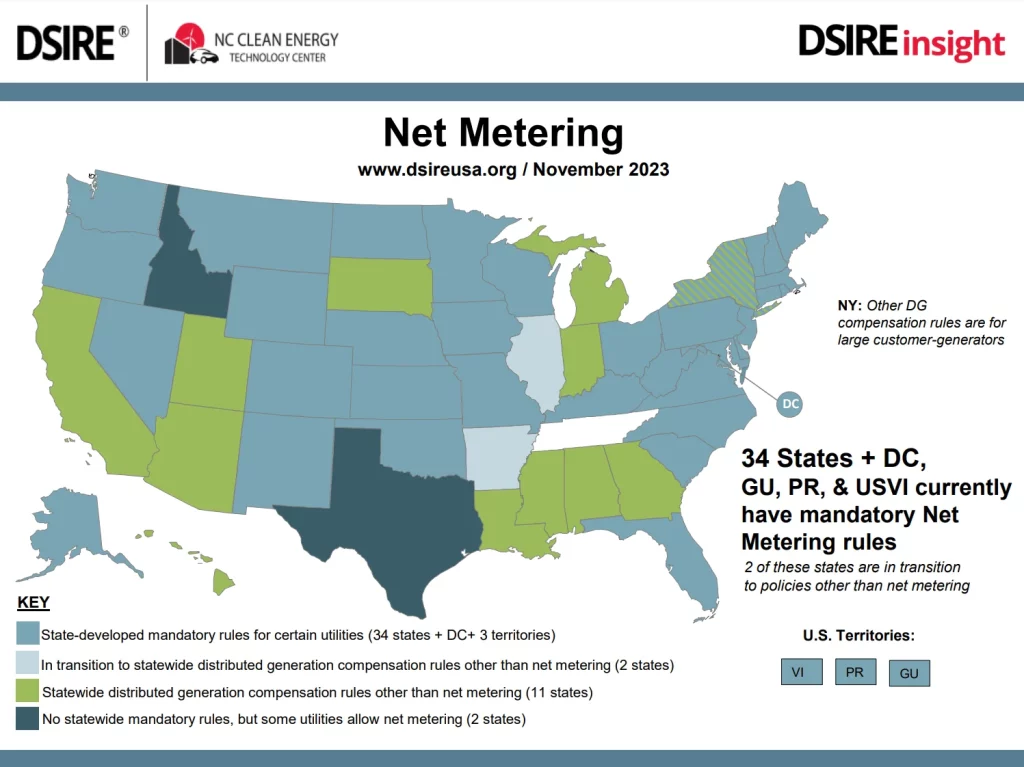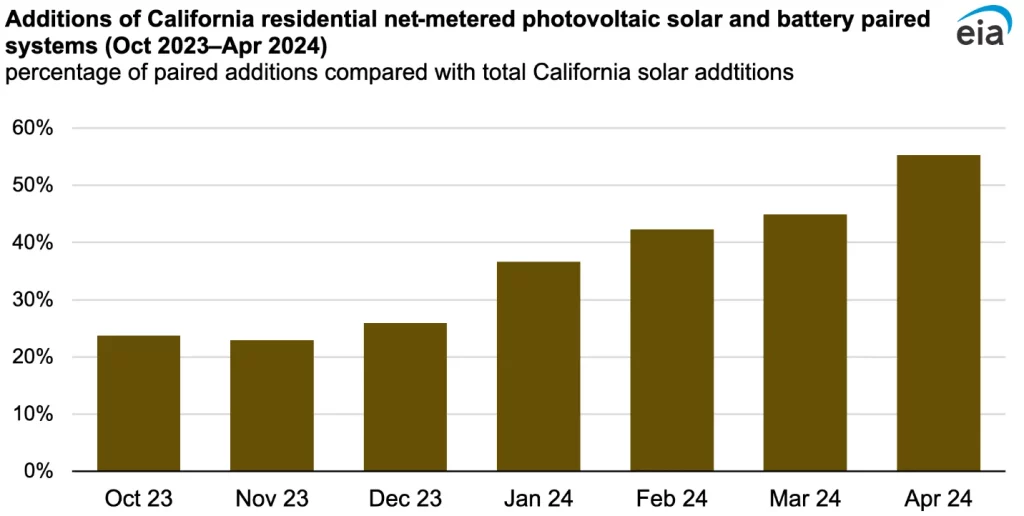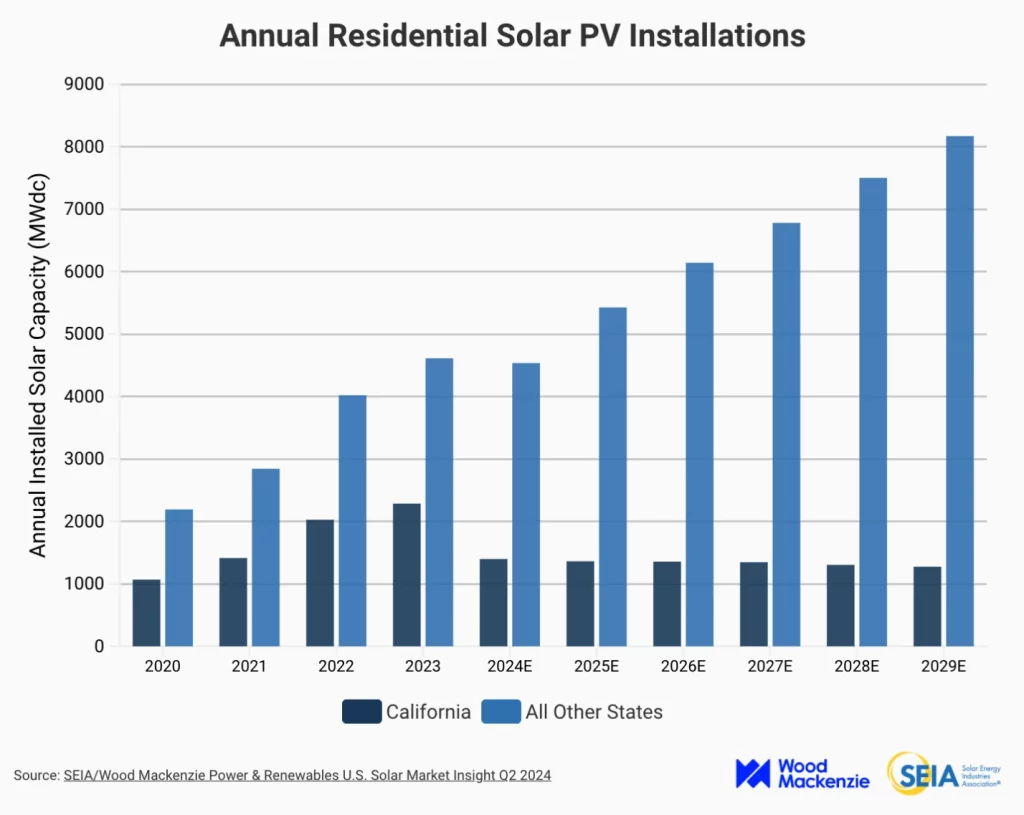Alongside federal tax credits and plummeting equipment costs, net metering has been one of the largest U.S. solar energy industry’s growth drivers over the last 20 years.
Today, the future of net metering can seem uncertain. However, California and several other states have made significant policy changes that decrease the value of solar exports to the grid and make it more difficult to create equitable PV solutions.
In this article, we examine the future of net metering, exploring the impact of emerging policies and trends and outlining what you can do to ensure sunny days remain ahead for your solar business and customers.
The evolving U.S. net metering landscape
Across the U.S., net metering policy details vary by utility, though most states have legislation outlining requirements for local energy providers.

Image source: DSIRE
With the country’s largest PV market and enough solar capacity installed to power 15 million homes, California’s recent net energy metering policy updates sent shockwaves through the U.S. solar industry. Commonly referred to as NEM 3.0, the new policy follows a net billing tariff (NBT) rate structure in which solar export values reflect offset utility energy generation costs rather than retail electricity prices.
So, while net billing programs have been active in Hawaii and Arizona since 2015 and 2016, California’s recent pivot represents a clear shift in the future of net metering. Since NEM 3.0 passed in late 2022, similar net billing programs have been introduced and approved in Arkansas, Illinois, and Idaho, with additional states considering the shift.
Why is net metering changing?
Considering the growth of solar, EVs, electrified appliances, and battery storage, the future of net metering reflects a more significant evolution in how energy is produced, consumed, and shared with the grid.
As utilities find ways to balance grid energy loads throughout solar production hours and daily demand cycles, new net billing and demand response programs encourage solar producers to use more of their electricity on-site or otherwise export energy to the grid when local demand is at its highest.
Impact on solar businesses
With declining values for energy exports, offering battery storage options is now essential for solar businesses serving net billing and non-net billing regions at the same time. By providing customers with more control over their energy consumption and sharing, solar batteries are now being installed at increased frequencies on a national scale, including high attachment rates in areas without mandatory net metering policies.

Image source: EIA
Beyond batteries, solar installers impacted by net metering changes may also need to make critical business decisions to stay afloat within evolving energy markets. By staying up to date with policies and adjusting operations or messaging ahead of the competition, solar companies can remain relevant to a potentially shrinking customer base. Solargraf’s solar design and proposal software is invaluable for navigating net metering tariffs, streamlining lead cycles, and forecasting PV system performance against real-world energy rates. Additionally, Solargraf can improve the economics of solar-plus-battery investments by optimizing consumption offset and exporting excess power during peak demand periods when rates are highest.
Impact on the solar industry
In 2024, over 30 states maintain mandatory net energy metering policies for grid-tied solar electricity systems. However, millions of Americans have been significantly impacted by net metering policy changes over the last few years, and there is always the looming potential that state programs could be dialed back or eliminated at any time.
About one year after NEM 3.0’s approval, the California solar and storage industry had lost an estimated 17,000 jobs, despite a nationwide increase in PV capacity. So, while annual residential solar installations in the U.S. are expected to continue rising through the end of the decade, the ongoing availability of net metering policies is critical to maintaining current growth projections.

Image source: SEIA
How to advocate for the future of net metering
As program changes can dramatically impact local markets, there are several things that you can do to help shape the future of net metering in the best interest of the solar industry and its customers. Around the country, most net metering policies are maintained and enforced by public utility commissions, which occasionally host meetings with opportunities to advocate for equitable programs in your area.
Taking it a step further, there are also many states that have solar and storage industry associations, like CALSSA in California and COSSA in Colorado, where you can join other stakeholders to actively impact net metering policymaking and legislation.
Key takeaways
With the future of net metering uncertain in the U.S., advocating for favorable utility billing policies and staying current on solar trends can help your company outlast the competition among industry fluctuations.
When utility policies change in your service area, you can continue to create valuable solar energy solutions for your customers by fully understanding how local programs work and adjusting your business model and product offerings accordingly.
For over a decade, Solargraf has been helping solar companies create fast and accurate solutions for our customers with built-in features to accelerate your lead cycle and accurately forecast PV system value against real-world energy rates.
FAQ
Is net metering grandfathered?
Yes, net metering is almost always “grandfathered in,” meaning that changes in local policies do not affect existing solar energy systems. For example, if you were a homeowner who installed a solar energy system in 2024 and signed a net metering contract, the value of your electricity exports will not change if your utility decides to switch to net billing in 2026. Most net metering contracts are guaranteed for 20-year terms.
Will net metering go away?
It is impossible to say whether net metering will disappear entirely in the U.S., though several states have already abandoned the program in favor of new net billing structures. So, while trends indicate that traditional net metering policies are slowly disappearing across the country, many opportunities to help solar adopters lock in favorable export rates remain in the foreseeable future.
Why are people against net metering?
Energy utilities must remain in business while balancing the supply and demand of electricity on the grid. While net metering policies compensate solar producers at retail or near-retail rates, net billing policies more closely reflect the opportunity cost a utility would otherwise pay to produce the electricity. As U.S. energy infrastructure modernizes, new net billing policies incentivize self-sustaining solar energy systems that do not exclusively rely on the grid for operation and value.


 United States
United States Germany/Austria
Germany/Austria Brazil
Brazil Netherlands
Netherlands Japan
Japan